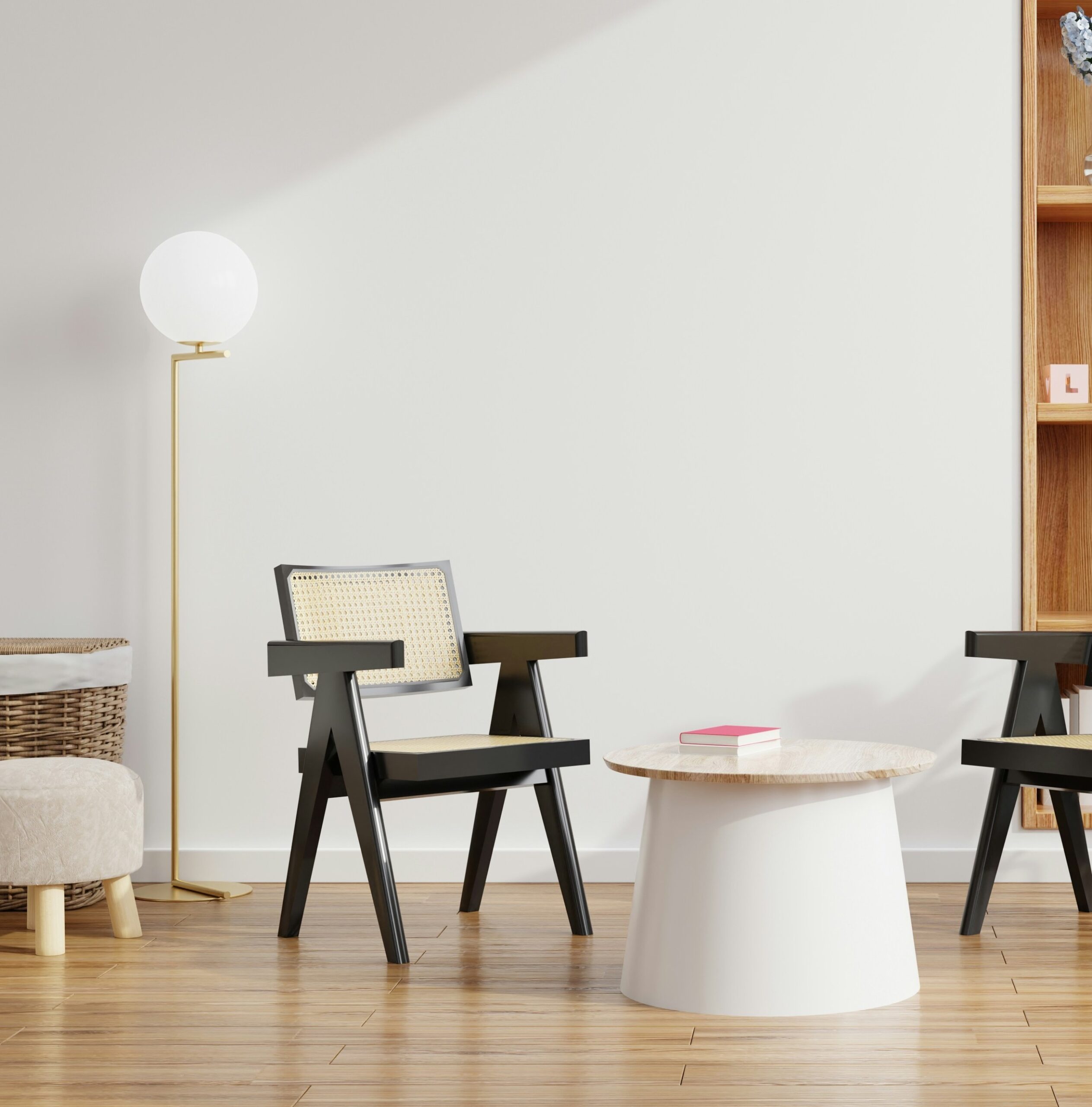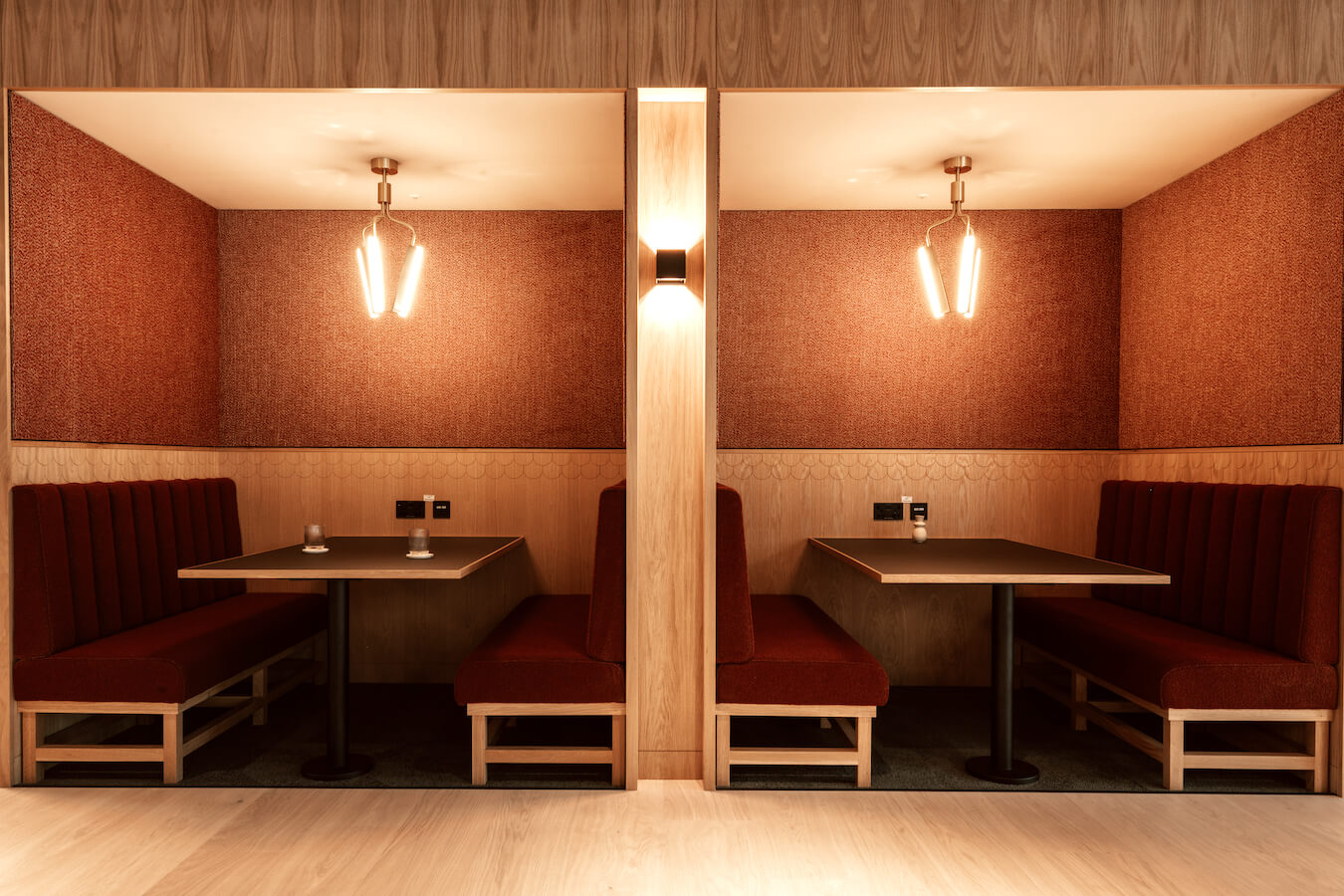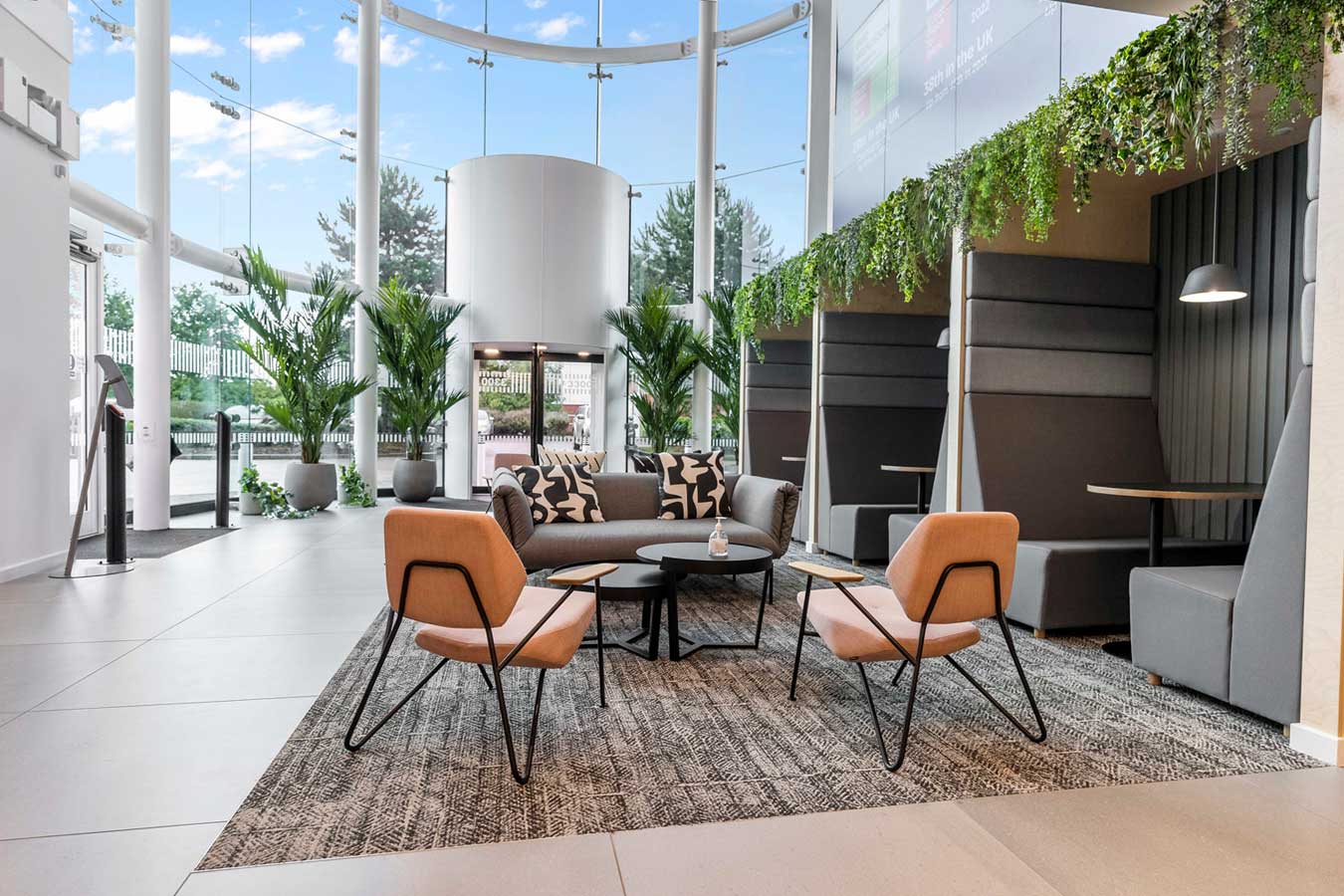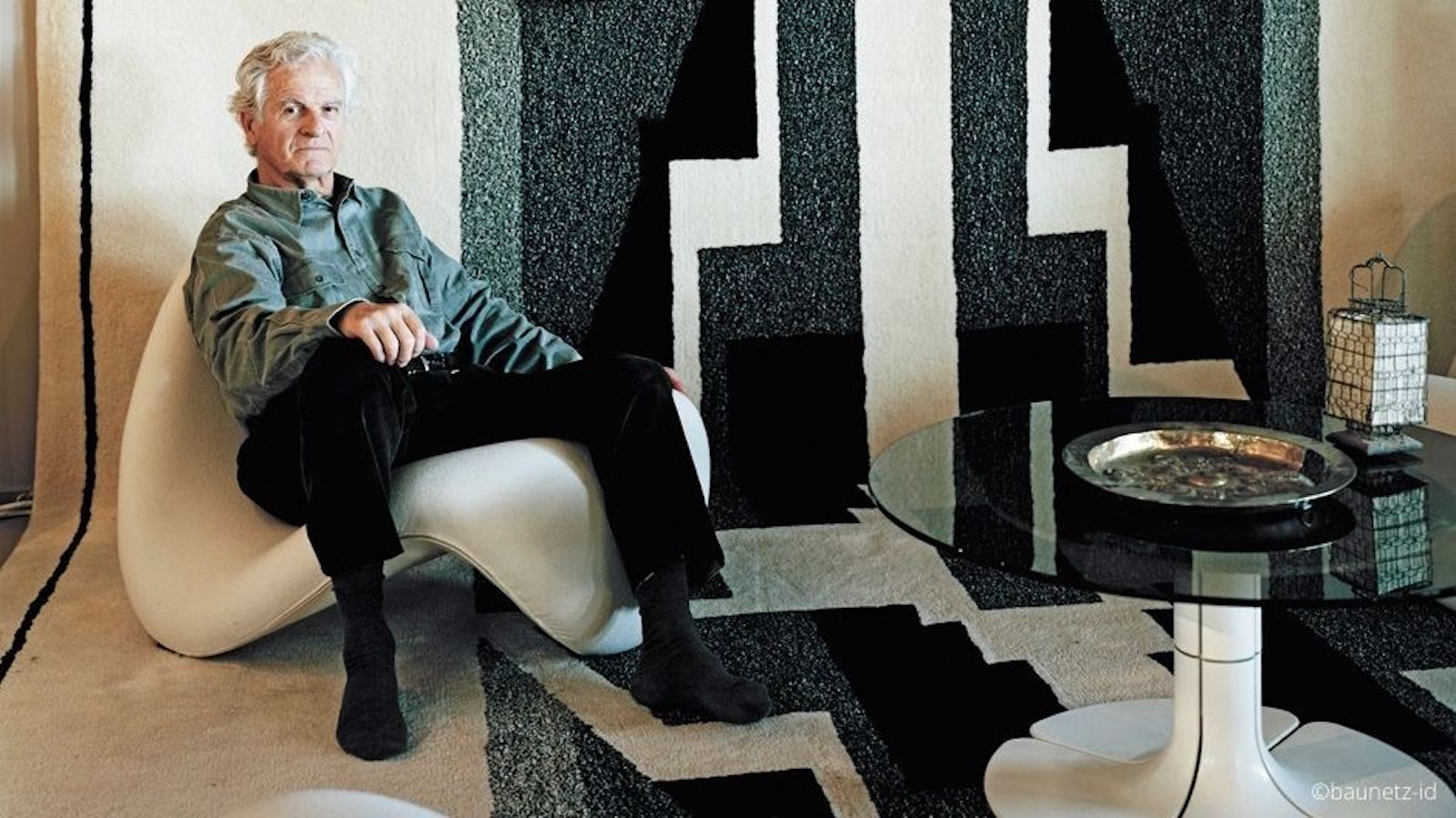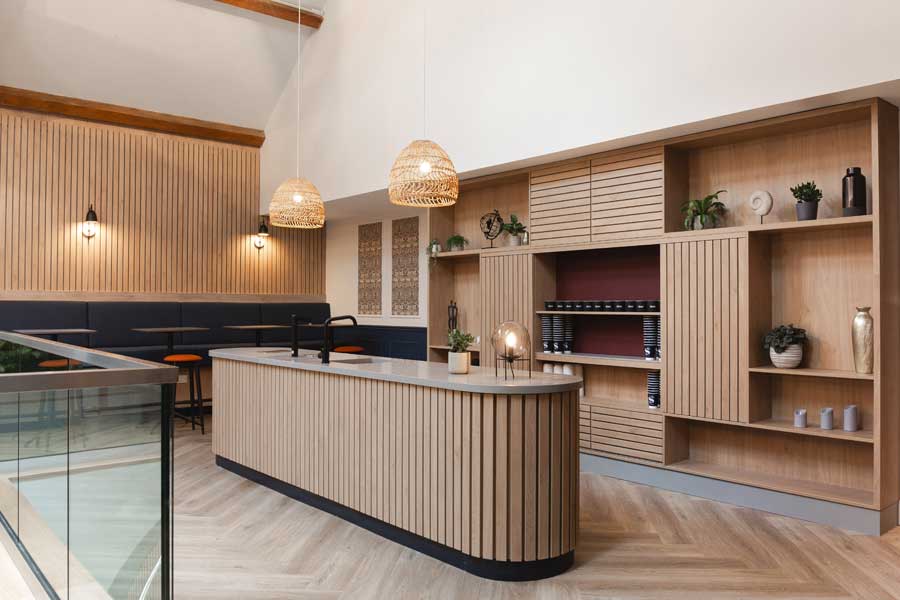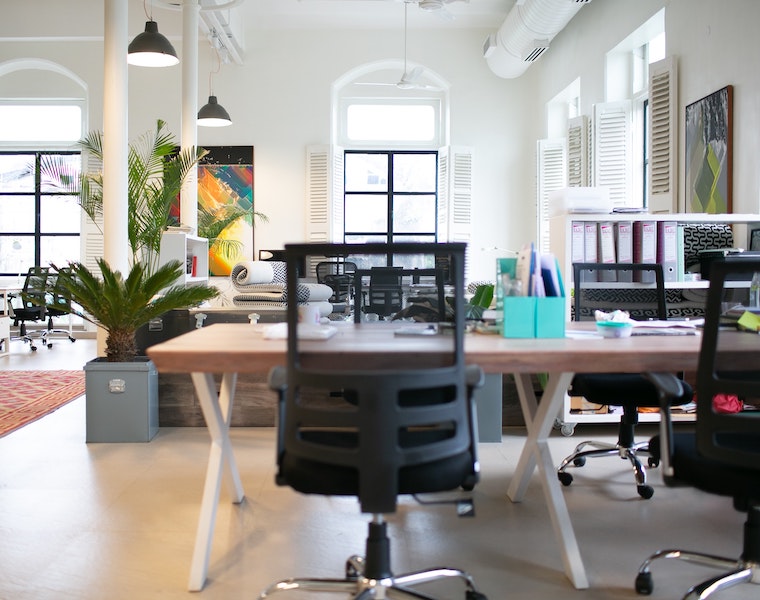If you’re seeing dark oaks, leather lounge chairs with matching footstools, glass coffee tables, geometric shapes and rich block colours everywhere you go, it isn’t by accident. These are telling signs of the Mid-Century interior design trend that has taken hold in a big way.
In this blog, we share our advice on how you can borrow from the Mid-Century design to influence the look and feel of your modern workspace.
What is Mid-Century interior design?
Mid-Century interior design is an approach to space design and decoration inspired by motifs in the arts and architecture during the mid-20th Century.
Mid-Century art and design are most synonymously related to 1940s-1960s America but its influence spread far and wide, around the globe and over the decades.
Mid-Century design has always been a timeless concept that artists and designers of all disciplines continue to find inspiration in. However, in recent years, we seeing Mid-Century motifs becoming increasingly popular in hotels, hospitality and residential interiors.
That’s not to say you can’t make Mid-Century work for an office or co-working space though. With resimercial interior design a continuing trend and ever-blurring lines between ‘work and play’, there are effective ways to make Mid-Century look right at home in a commercial environment too.
Characteristics of Mid-Century interior design
Below are some of the signature elements that, when creatively combined, define the Mid-Century aesthetic and approach to interior design.
Darker woods
Walnut, teak, rosewood, mahogany and warm oaks are a key part of Mid-Century design. Wood was a popular material as it aligned with another synonymous element of Mid-Century interiors, which is bringing nature in—some of the earliest instances of biophilic design.
Clean lines and organic shapes
One of the biggest telltale signs of Mid-Century influence is clean lines and organic shapes. This means minimal, geometric forms, including curved lines and straight edges, without any elaborate or complex.
Think arched walls, sharp corners, rounded soft furnishing, hard furnishing with smooth curvature and lots of ball-shaped light fixtures.
Manmade materials
With its origins in the Industrial Revolution and the Post-War era, manmade materials feature heavily in Mid-Century design’s first and most authentic forms.
Existing manmade materials became more readily available and new manmade materials like plywood, fibreglass, laminate, aluminium and foam were all discovered. This, of course, revolutionised so many facets of design but notably in furniture design.
The discovery and availability of the materials are what catalysed the Mid-Century focus on the relationship between furniture and the form and function of the human body.
Textures > prints and patterns
Mid-Century design doesn’t shy away from layers and contrast. However, this doesn’t come in the form of layered patterns and clashing prints. Instead, Mid-Century is all about solid blocks of colour in simple palettes with layers of texture and contrasting materials.
Think buttery leather furniture against a tactile concrete wall and plush rugs in between a smooth glass coffee table and an organic wooden floor.
Pops of earthy colours
Colour isn’t complex in Mid-Century design but it is a key component of its visual traits. You can spot Mid-Century influence where bold pops of rich, warm, earthy tones are used, including mustard, umber, crimson, navy and soft neutrals.
Harmony with architecture
The clean lines, organic shapes and geometry that form the foundations of Mid-Century design are part of the movement’s aim to ensure the interior design compliments and blends with the original structure and architecture of the building.
This was the famous philosophy of Frank Lloyds Wright, a 19th and 20th Century architect and designer, who believed that “the building and interior should be as one”.
Indoor-outdoor synergy
We mentioned this earlier when highlighting Mid-Century’s use of dark and warm wood but a key part of this design era was finding ways to bring the outdoors in.
The simplicity of nature inspired Mid-Century designers and this formed some of the earliest examples of biomimicry in interior design. Large windows and glassy spaces were often used to blur the boundary between outside and in.
Statement lighting
Lighting isn’t a second thought in Mid-Century design, it’s used as a statement feature to add distinctive flair, following the theme of soft edges, straight lights and the influence of the simplicity found in nature. Also, a focus on ambient mood lighting rather than harsh illumination of spaces.
Ball lamps, floor lamps, pendant lamps, Sputnik chandeliers and other light fixtures that look more like modern art installations are all types of lighting you’ll find in a Mid-Century design scheme.
Other miscellaneous Mid-Century motifs:
- One storey spaces
- Open-plan layouts
- Chairs and tables with tapered legs
- Lowered ceilings
- Large windows
- Lounge chairs and matching footstools or pouffes
- Coffee tables
- Credenzas
- Rugs
Pierre Paulin: Famed Mid-Century furniture designer
One of the most prominent names in Mid-Century design is Pierre Paulin (1927-2009). He was a French designer who started his career studying ceramics and stone carving. Due to various events in his life, this progressed into interior design and furniture design, more specifically.
In fact, Paulin went on to become one of the most influential furniture designers not only of the Mid-Century era but of all time.
Image: ©baunetz-id
With the increase in materials and machinery available in Post-War times, Paulin became particularly fascinated with the relationship between furniture and the human body. He worked with Mobilier National and Artifact to create materials and technology that changed the course of furniture design forever.
The Pacha Lounge Chair, Mushroom Chair, Tulip Chair and Ribbon Chair are some of Paulin’s most famous furniture designs.
Many of his iconic Mid-Century pieces are still being produced by Artifact today, while some originals can still be found in antique and secondhand furniture stores.
If you’re curating a Mid-Century interior design mood board, it’s safe to say that there will be countless Pierre Paulin influences on it.
Making Mid-Century work for modern office design
So, how can you translate the Mid-Century look and feel into a design scheme that makes sense for your workspace? Below are six steps you can take to achieve it, whether you just want subtle hints of the trend or a full mid-20th Century-inspired space transformation.
Consider function and form equally
As we’ve explored in this blog post, the relationship between furniture and the human body was an important part of Mid-Century design and manufacturing. The emphasis was on ergonomic engineering and designing furniture in ways that facilitate natural postures of the body and musculoskeletal function.
So, not only will ergonomic furniture help you support better employee physical health and wellbeing but it will also help you make more Mid-Century design choices.
Blend outdoor and indoor environments
We’ve spoken before about the benefits of outdoor workspaces and biophilic design but if you want to truly give your office a Mid-Century touch, it’s time to double down on bringing the outdoors in.
A simple way to do this is by adding more wood and other natural materials into the space, while are more extensive revision of the space would be to enlarge windows and focus on letting as much natural light in as possible.
Sustainable alternatives for manmade materials
While the mid-20th Century was all about discovering and mass-producing lots of manmade materials, 2025 (and beyond) should be all about finding more eco-friendly and sustainable alternatives.
Work with an office design partner and manufacturers who will be able to ensure you achieve the right look and feel for your Mid-Century space without compromising the planet.
Let the architecture guide you
When considering your office fit out, whether you’re at the very first phase with an empty, raw space or simply looking to refurbish your current space, use the original building to guide your design choices. Make them in keeping with the original structures and lines as much as possible.
Minimal decor
The Mid-Century is definitely more minimal than it is maximal, so choose your ornaments and decor strategically and sparingly. Choose items that parallel the shapes in the architecture of the space and echo the forms of the furniture you choose.
Are you looking to transform your workspace and wondering how you can incorporate Mid-Century interior design? Get in touch to chat about how our experts can help.
